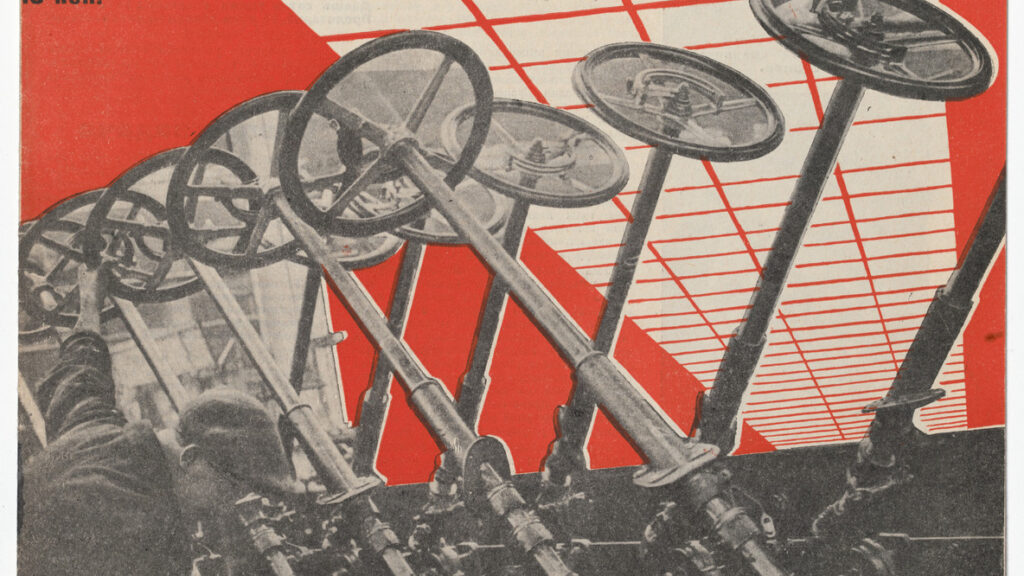F.T. Marinetti, “Manifesto of Futurism”; Aleksandr Rodchenko, “Who We Are: Manifesto of the Constructivist Group”; and El Lissitzky, “Our Book”, Graphic Design Theory: Readings From the Field by Helen Armstrong, pages 19-31.
Questions / Prompts
- Consider if and how these manifestos addressed the concepts of authorship/ownership, universal systems of communication, and social/political engagement.
- What common views do these artists/designers share, and where might they disagree?
- Which elements of these texts remain relevant for the present, and which elements are problematic?
- How has the communication process changed since the early 20th Century, specifically with regard to “feedback” and “noise”?
Response
The manifestos introduced within the reading shedded some light on some of the most important designers within the avant-garde movement. However, the manifestos that were shown within the readings, talked in some ways about authorship/ownerships. Regarding authorship, each designer within their written manifesto all had their own understandings about change within a design movement. To be a force which can help transmute different ideologies and concepts within new eras of design. Since there were many changes/advancements within technology, many designers had to conform to it, which helped bring about new ideas. Computers were a technological form of communication in which many designers used to communicate with each other. According to the reading, it states “They embraced mass communication; they abandoned easels” which helps to serve that traditional methods needed to be abolished. When bringing on political and social engagement, the article states that it “repositioned artists as agents of social change standing at the center of a brave new world” (https://hyp.is/3M82BjLSEe2MDQebCjTr-Q/designopendata.files.wordpress.com/2014/05/graphicdesigntheory_helenarmstrong.pdf) This can connect with the political world because to invoke change, we have to start a movement in which can help amplify our voices.
Some common views these artists/designers share is that they help break the boundaries and rules of what design can be. To make a meaningful impact which can help spark movements within the art/design world. Every single designer listed here are all innovative, daring and tends to shift the way they and other designers think. For example, F.T Marinetti used to help express his thoughts through visual form. According to the article, it states “he used print to communicate with the masses-posters, books, flyers. He bent and twisted typography to better suit his poetry and his overall message of noise, speed, and aggression” (https://hyp.is/p6llxDLCEe27oIN24L7o4Q/designopendata.files.wordpress.com/2014/05/graphicdesigntheory_helenarmstrong.pdf) Helping to deviate from the standard design practice, Marinetti decided to alter existing forms in order to help invoke a feeling. The article also states “to “exalt” in the “punch and the slap,” to believe that entirely new forms are not only possible but imminent.” (https://hyp.is/vISVQDLCEe2OukusZ7pOHw/designopendata.files.wordpress.com/2014/05/graphicdesigntheory_helenarmstrong.pdf). We have to continue to push out newer ideas and concepts to help fight drastic changes not only within design, but also for societal changes.
There are many elements within the text that are present today. Throughout the designers manifestos, they state that to help change ideologies revolving design, one must break through the traditional norms. In fact, throughout all of their manifestos, they all share the same goals, but are said in different ways.

For example the image above by Aleksandr Rodchenko, wanted to break away from standard rulesets that involved painting. He states “I reduced painting to its logical conclusion and exhibited three canvases: red, blue and yellow. I affirmed: It’s all over.” This shows that it’s possible that creating photomontage and digital art can also prove successful while deviating away from paintings. They can also tell a story. However, some problems that might be problematic today is the shift in which many designers start to break these rules. Present day, there is much talent amongst the design world, with every single one either following the design ruleset or not. But those who shifted away from the movements inspired today by the avant-garde era, are also experimenting and finding new ways in which graphic design can evolve outside of digital mediums.
The communication process has changed in which technology started to become more advanced. Being able to spread graphics and deliverables through mediums such as social media, email, etc all proved effective. Regarding feedback and noise, noise can be physical, sematic, pragmatic and rhetoric. It can also be distorted through the sender. Feedback is when the person acknowledges the deliverable sent to them. This can be commonly associated with emails or any platform that utilizes messaging. It doesn’t have to be text based, but can also be image and object based. Paintings, print, books can also be other forms of communication.




Leave a Reply